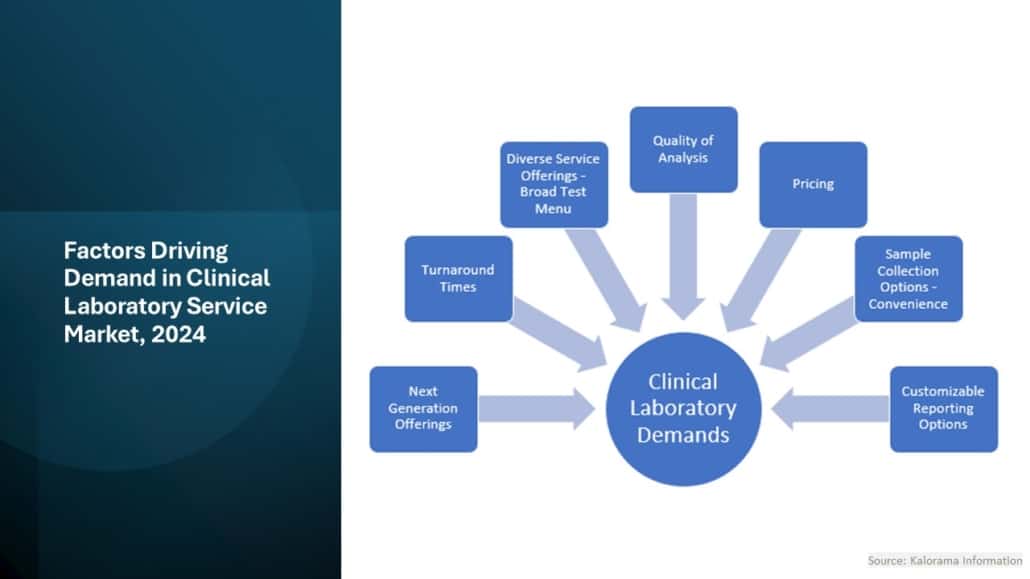The Vital Role of Clinical Laboratories
Clinical laboratories are helping to shape healthcare’s future. Clinical labs play a crucial role in disease detection, treatment monitoring, and personalized therapy. Their impact extends far beyond test results, as clinical labs hold the key to better patient outcomes and cost-effective care.
In 2023, the global clinical laboratory services market surpassed $150 billion, according to Kalorama Information in the June 2024 report The Worldwide Market for Clinical Laboratory Services, 9th Edition. Factors driving growth include an aging population, increased chronic disease incidence, advanced testing technologies, and a focus on accurate diagnosis and monitoring, among other factors (see chart below). However, challenges—like cost reduction imperatives and economic uncertainty—also loom large.

The Diagnostic Powerhouses
Clinical laboratories are the backbone of in vitro diagnostics (IVD). They analyze a diverse array of disorders, including pathology, immunology, cholesterol levels, genetic markers, and more. Remarkably, 70% to 80% of physicians’ diagnoses stem from lab tests. Beyond diagnosis, these labs track disease progression, guide drug treatments, and inform individualized care plans—especially critical in oncology.
A Historical Journey
The roots of clinical laboratories trace back to the late 1800s, fueled by epidemics like tuberculosis and cholera. Initially, hospitals dominated the landscape, accounting for 90% of lab facilities. The discovery of antibiotics in the early 1900s further propelled their growth, saving countless lives.
Today’s Impact
Modern clinical labs empower physicians like never before. As healthcare costs rise, hospitals aim to reduce patient stays. In the United States, average hospital stays hover around 4.7 days, influenced by aging demographics. To continue to try and keep stays at a minimum and ultimately reduce cost, monitoring technologies, diagnostic imaging and laboratory measures and disease/treatment monitoring through diagnostic laboratory practices are primary ways physicians and administrators are continuing to meet optimal healthcare outcomes while also reduce costs.
Global Trends
Globally, the average hospital stay is 6.6 days, with Russia and Japan leading the way. As pressure mounts to cut healthcare spending, outpatient and home-based services gain prominence. Expect consolidation among clinical labs, especially in independent and community sectors, as they adapt to cost pressures while maintaining quality care. For more information, purchase The Worldwide Market for Clinical Laboratory Services, 9th Edition

